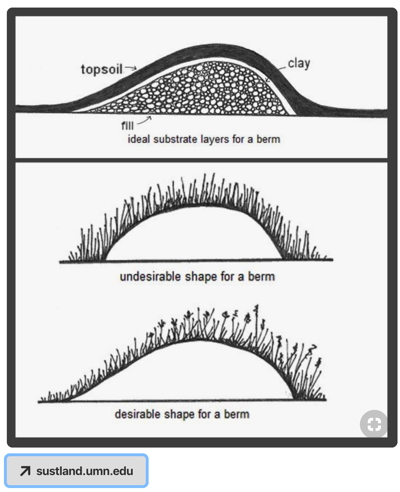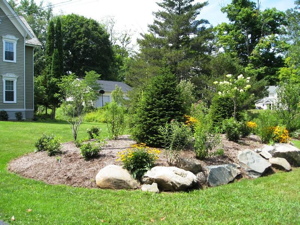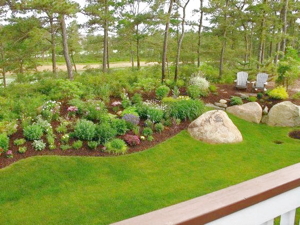Under Construction 
Designing landscape mounds & berms | Living the Country Life
The berms should be about 4-5 times as long as it is tall. In order to make them look like an actual element in the landscape rather than just kind of a high spot in the landscape, they should be probably about 18" up to about 24" tall," says VanDerZanden. "Once you get more than about two-feet, then you can start to run into some erosion issues."
How to Make Landscape Mounds | Home Guides | SF Gate
A mound for trees and large shrubs should have a slope with 5 to 7 feet of horizontal run for every foot of mound height; a slope with 3 to 4 feet of run for every foot is acceptable for ground covers, grass and other shallow-rooted plants. Plan gentle curves in the perimeter and set the peak off center to give a natural appearance.
Mounds between 18 and 36 inches high generally look more natural, especially in otherwise flat garden spaces. Consider grouping two or three landscape mounds to resemble rolling hills.
Spread clay soil over the filler material, unless you plan to plant trees, to hold the basic shape of the mound together. Clay is thick and sticky, making it less likely to erode during rainfall or watering.
Creating A Berm - How To Use Berms In The Landscape

See also:
10 Tips To Build A Berm And Landscaping Mounds

 
Sources: Landscaping Ideas for a Front Yard: A Berm for Curb Appeal - YouTube
Links:
69 best Berm and Mound Landscaping images on Pinterest in 2018
last updated 28 Apr 2017
| 


